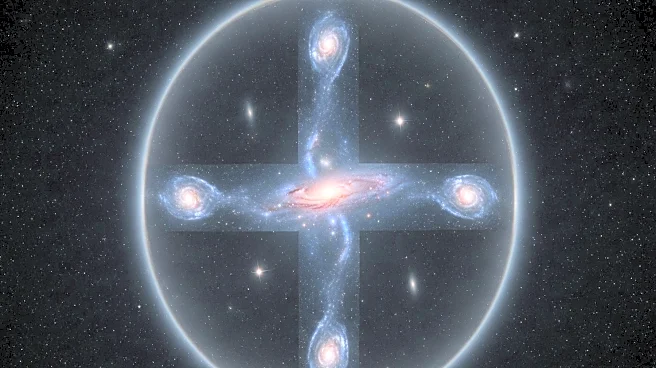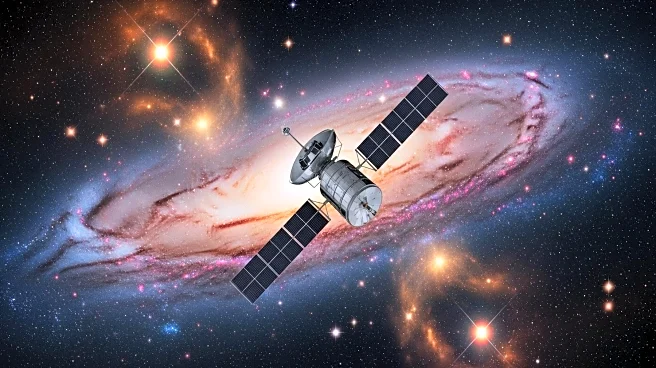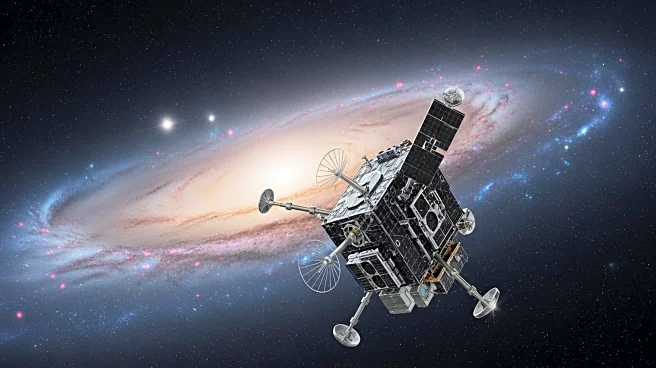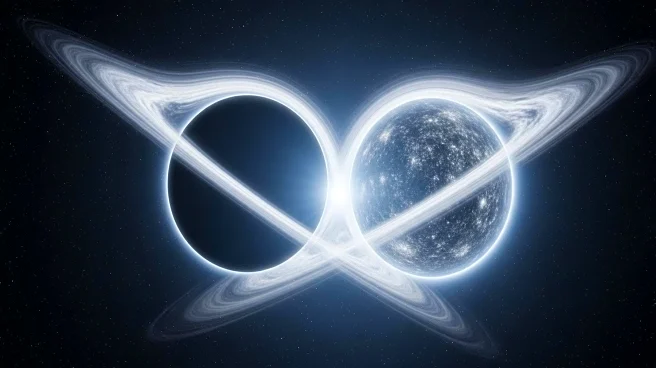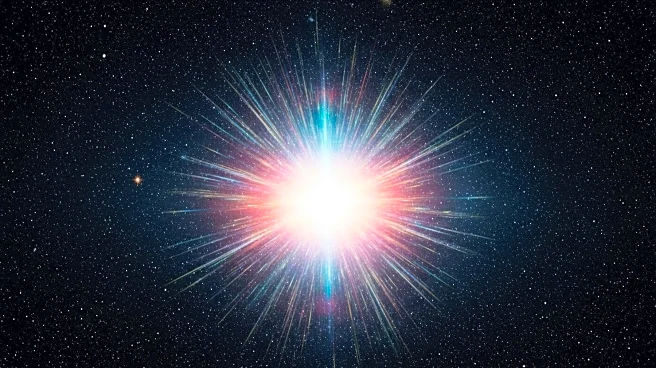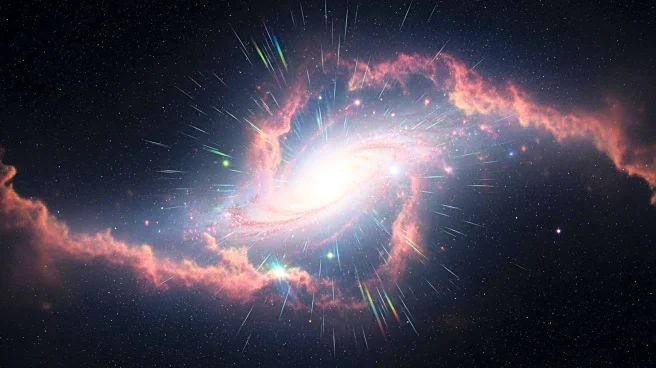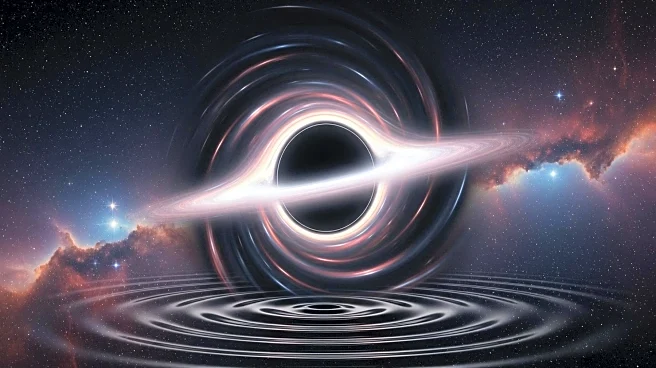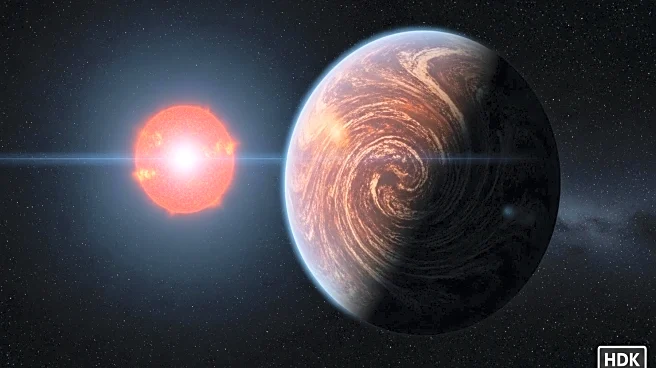What's Happening?
A team of international researchers, including Rutgers University astrophysicists, has discovered a rare Einstein Cross with an additional image, indicating the presence of a massive, hidden halo of dark matter. The Einstein Cross is a cosmic configuration where light from a distant galaxy is bent by the gravity of foreground galaxies, creating multiple images. The unexpected fifth image in this configuration suggests an unusual mass distribution, attributed to dark matter. The discovery was made using data from the Northern Extended Millimeter Array (NOEMA) and the Atacama Large Millimeter/submillimeter Array (ALMA).
Why It's Important?
This discovery provides a unique opportunity to study dark matter, which constitutes most of the universe's matter but cannot be observed directly. By analyzing the gravitational lensing effect, scientists can infer the presence and distribution of dark matter. Understanding dark matter is crucial for comprehending the universe's structure and evolution. The findings also demonstrate the power of international collaboration and advanced technology in advancing astrophysical research. This breakthrough could lead to further insights into the nature of dark matter and its role in the cosmos.
What's Next?
The research team plans to conduct further observations to confirm their findings and explore additional features, such as outflowing gas from the galaxy. These observations could validate their models and provide more detailed information about the dark matter halo. The study highlights the importance of continued support for scientific research and international collaboration, as well as the potential for future discoveries using advanced telescopes and technology.

